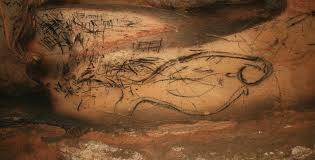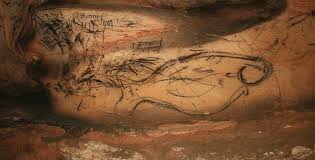Earlier this year on a blisteringly hot day, I visited a cave full of stunning Palaeolithic art. The Pileta Cave, near Ronda in southern Andalusia is decorated with deer, horses, goats, some mysterious cross-hatching symbols that no-one understands, and best of all — and unusually for cave art — a huge fish. I first visited this cave in 1992 led — with my wife and children — by an old man carrying an oil hurricane lamp. Deep underground, in the dim, flickering yellow light the animals came to life in a deeply moving, awe-inspiring experience. It must have been the same for the people who created these images, or who came to view them thousands of years ago.

The Pileta cave and its images have been known for around 120 years. They were first made known to the English-speaking world by an ornithologist, but the cave was on the land of a local farmer José Bullón in 1905 and it was his descendant that showed us round in 1992, and his grandson that showed us round this year. Private ownership and limited public access has ensured the preservation of the cave and avoided the need for a replica as at Lascaux or Altimira.
Animals in cave art is the first tangible evidence of our relationship with the natural world. And this year at New Networks for Nature we are lucky to have the archaeologist Professor Paul Pettitt from Durham University speaking to us on this fascinating topic. His research focuses on the behaviour of the Neanderthals and Pleistocene members of our own species. I cannot wait to meet him and to hear what he has to say.

